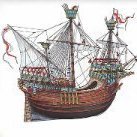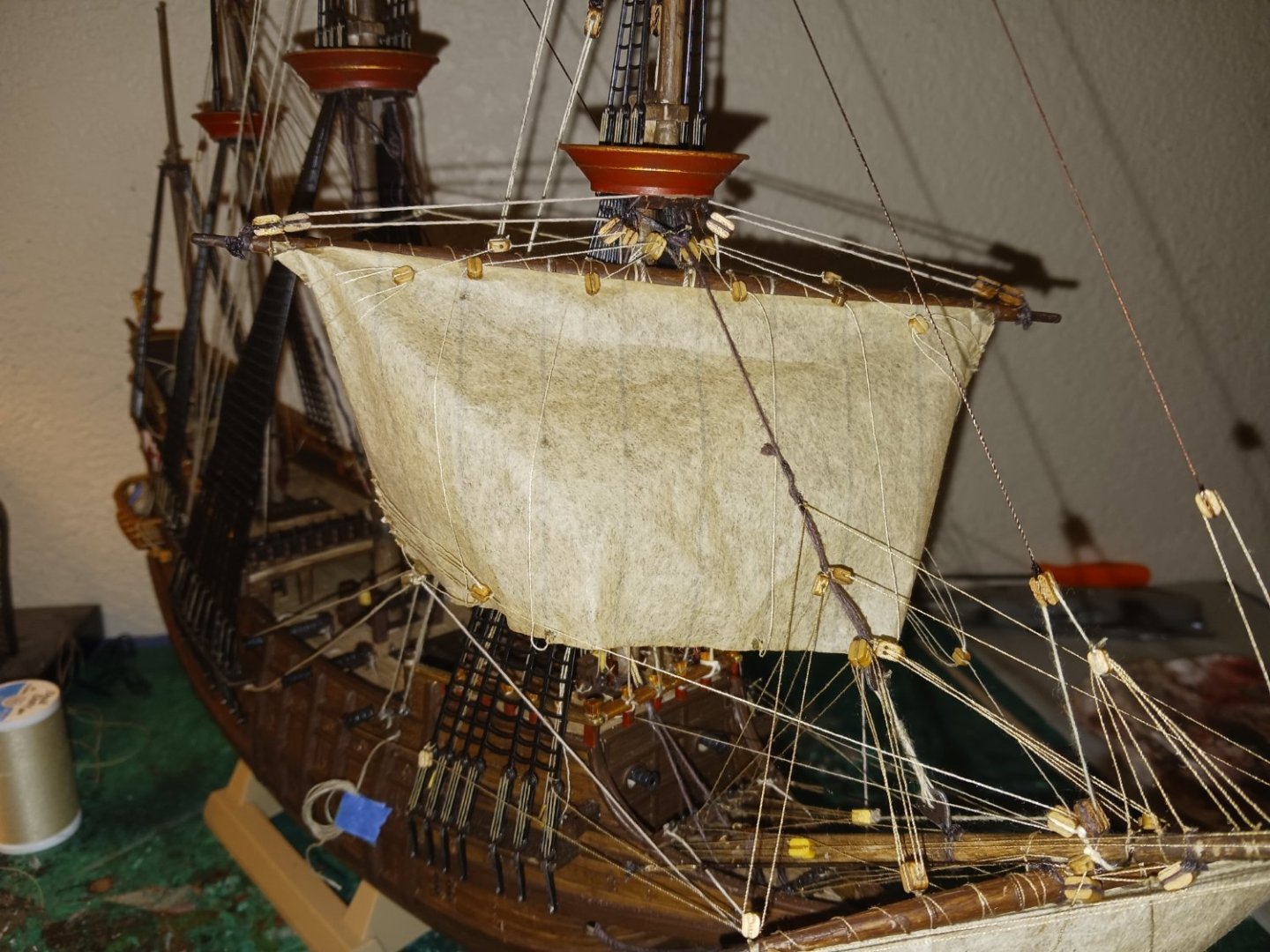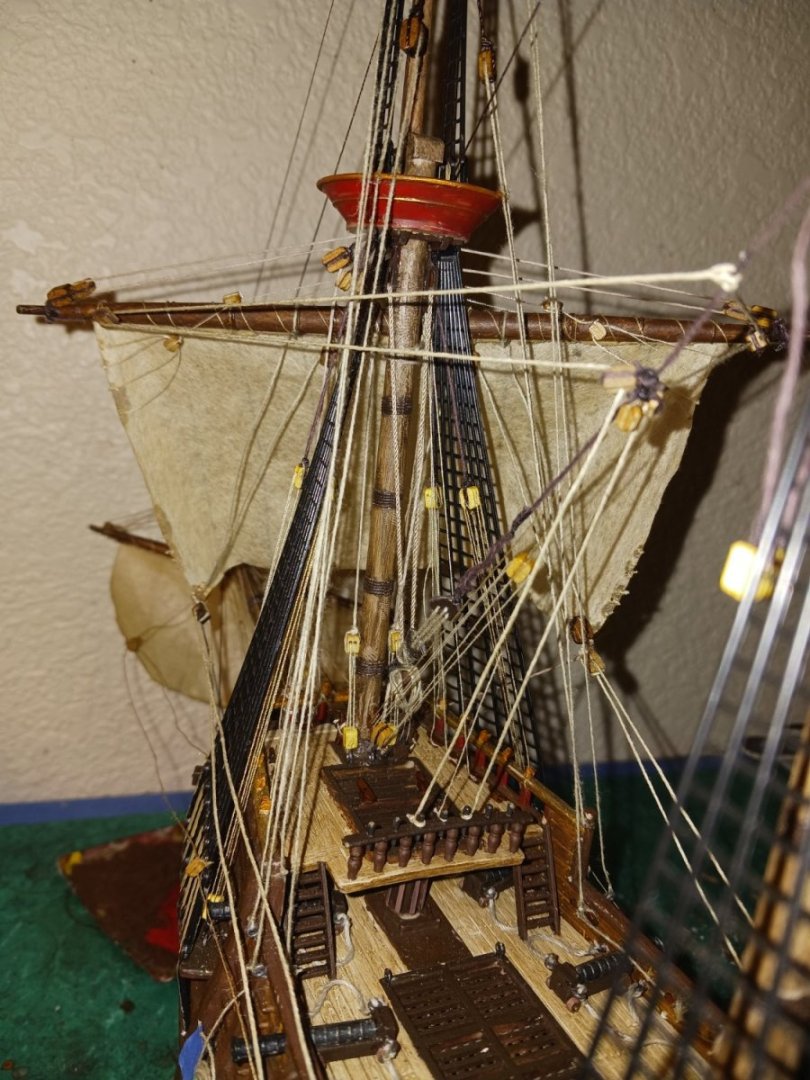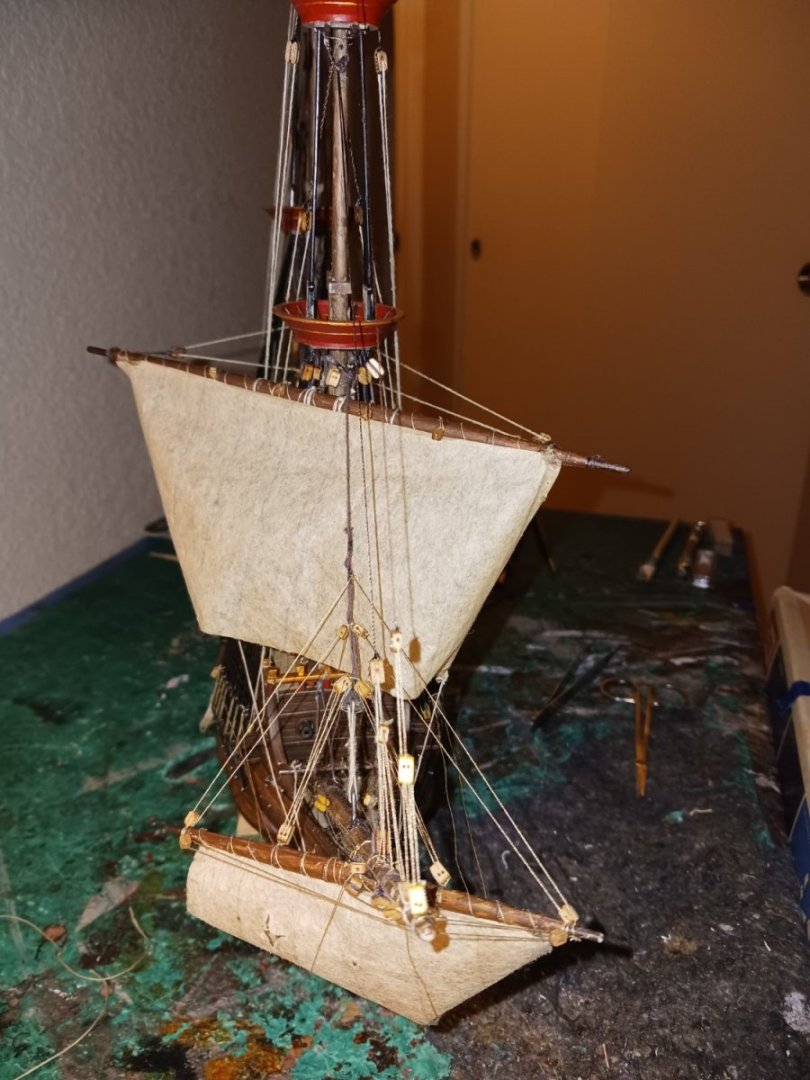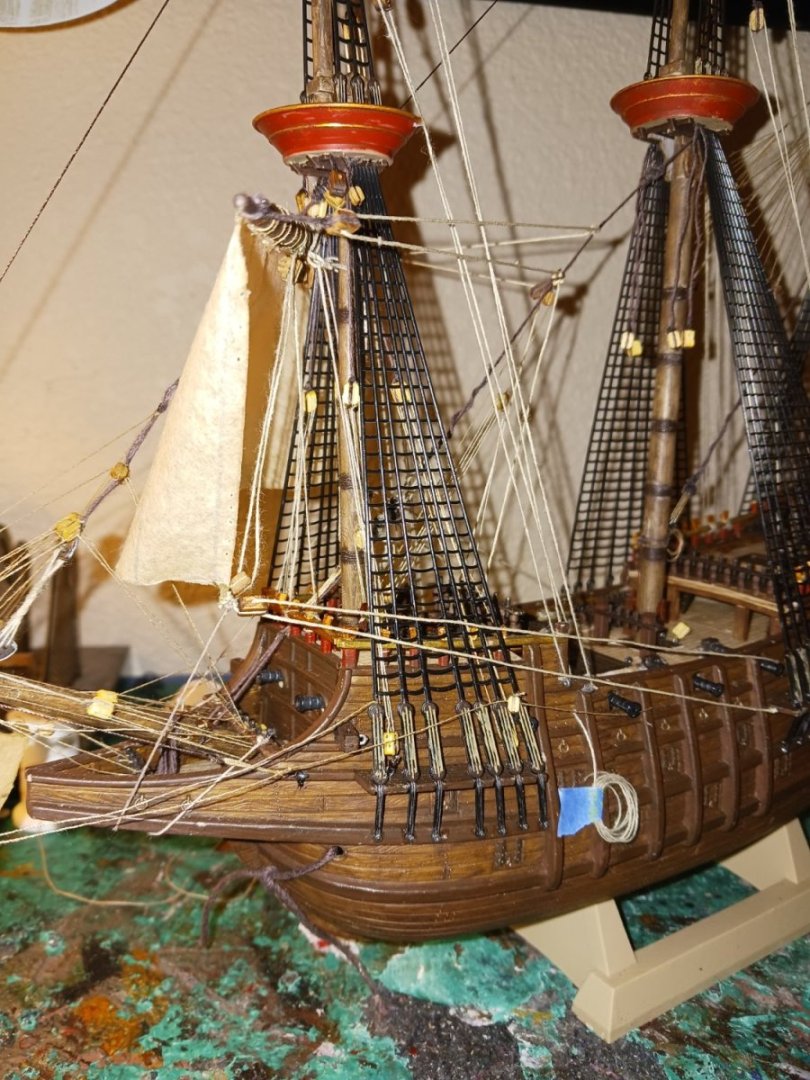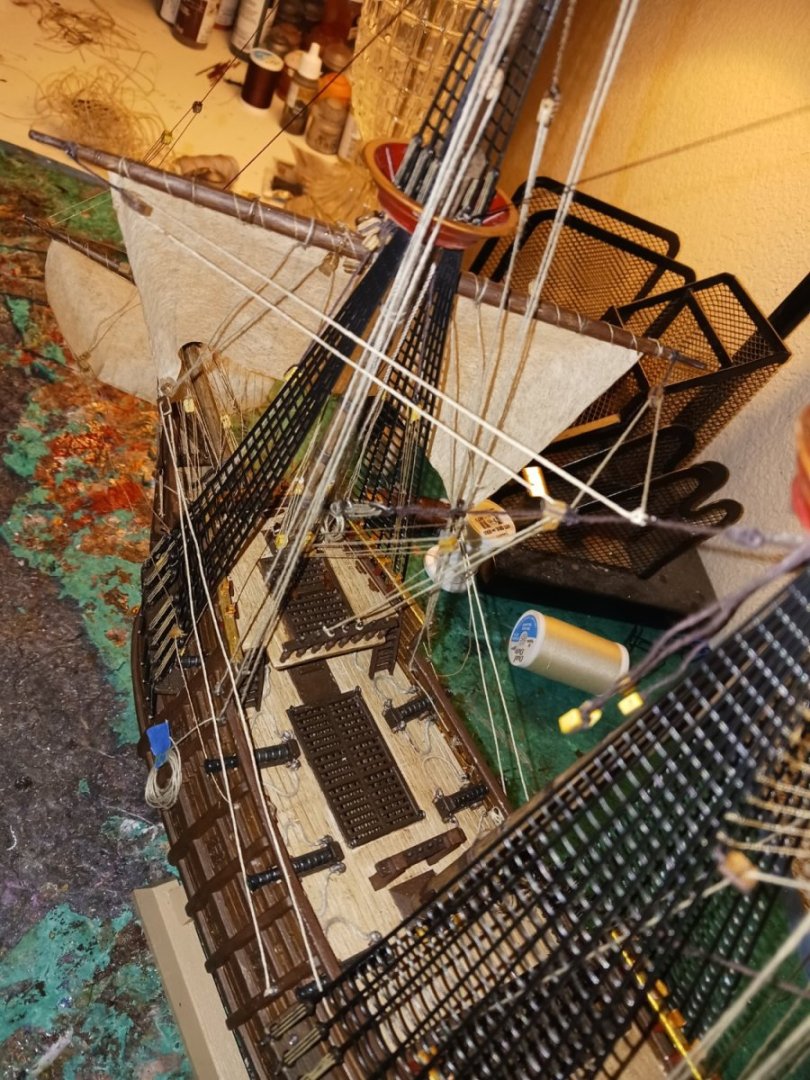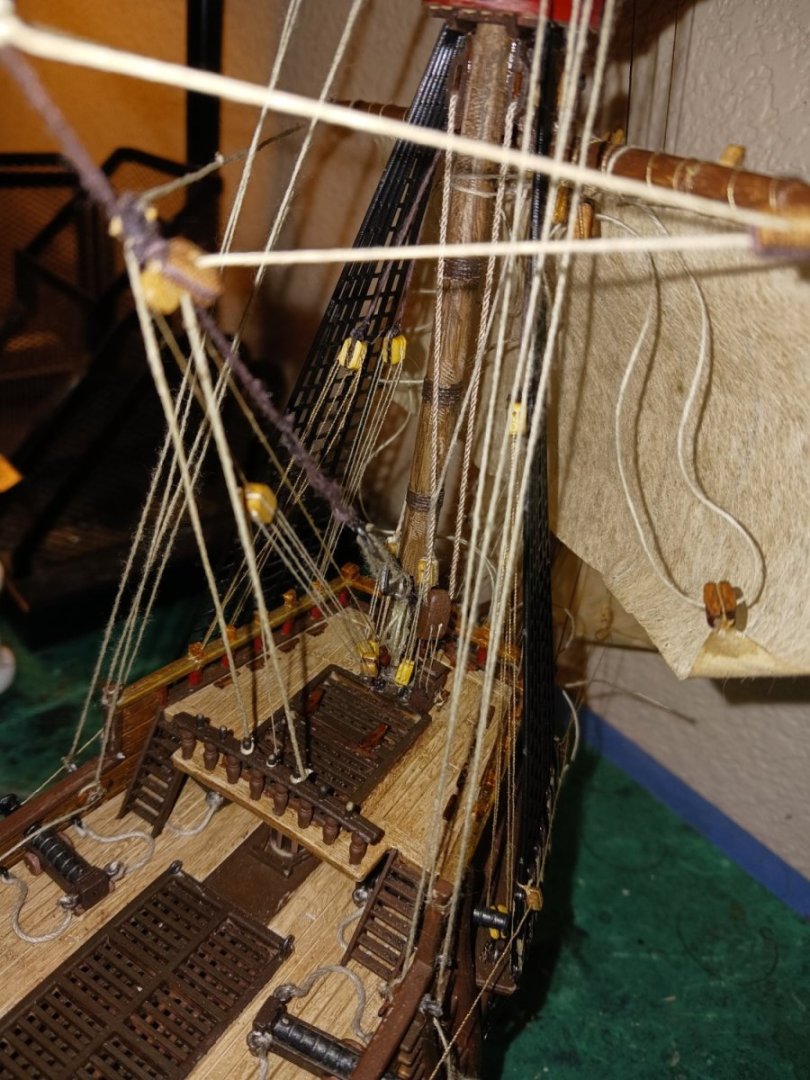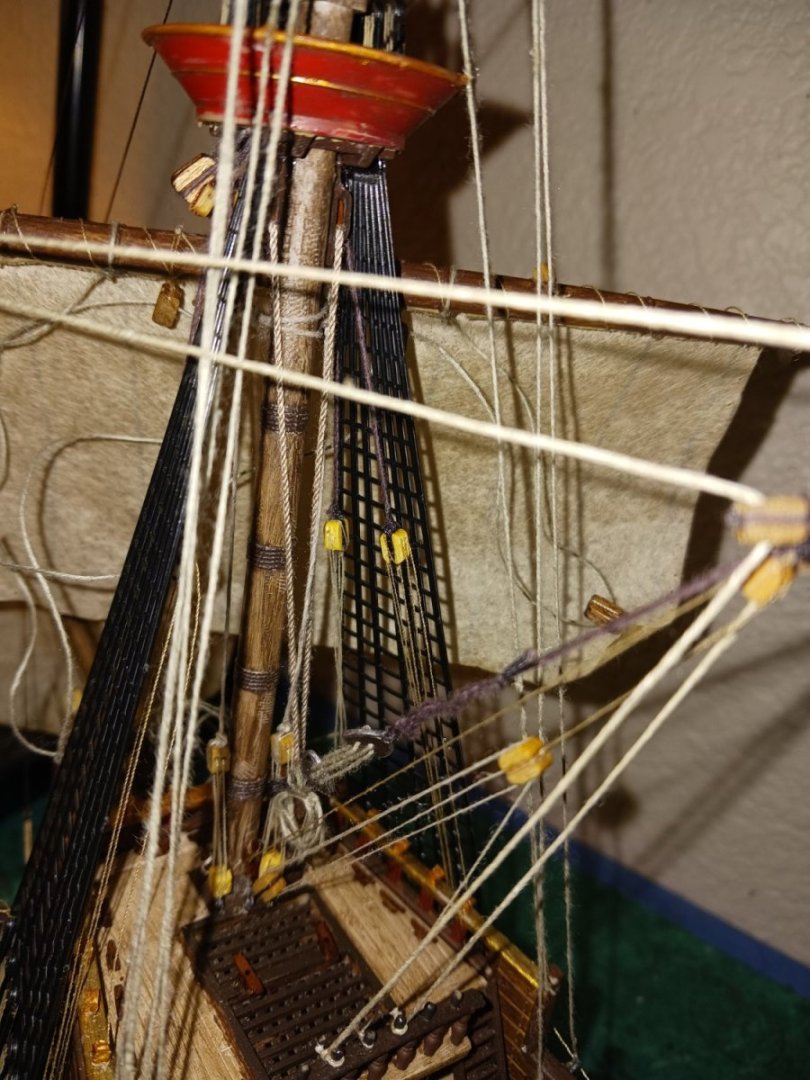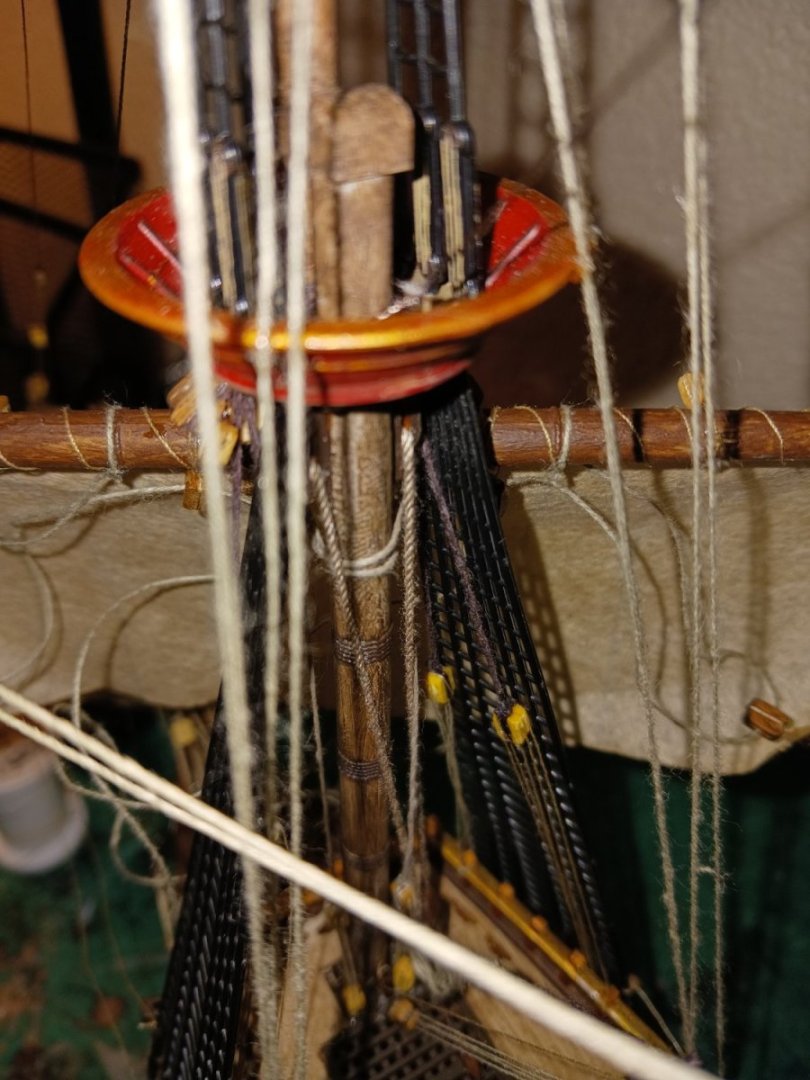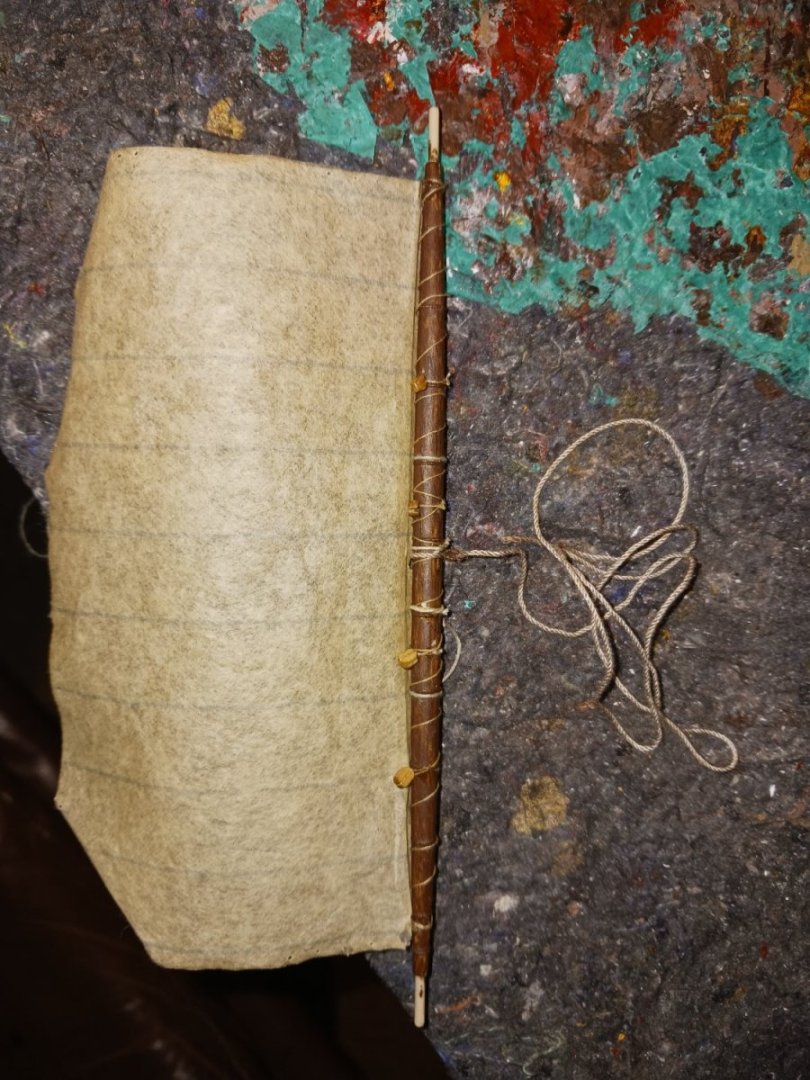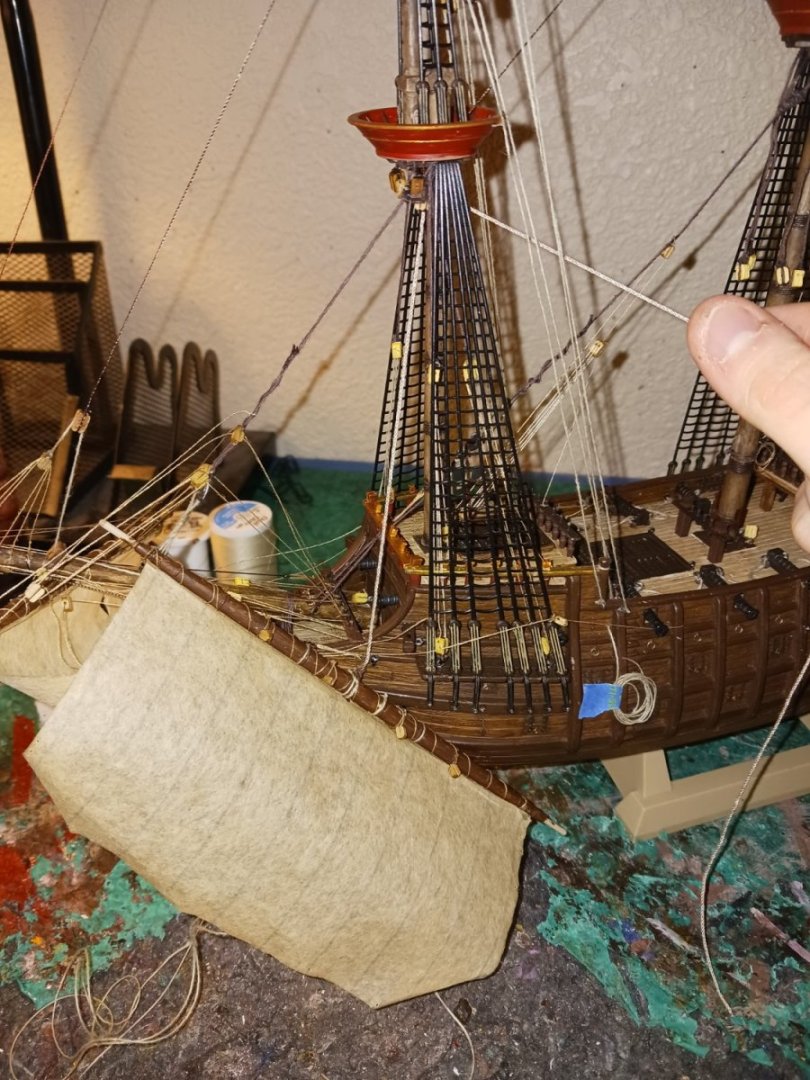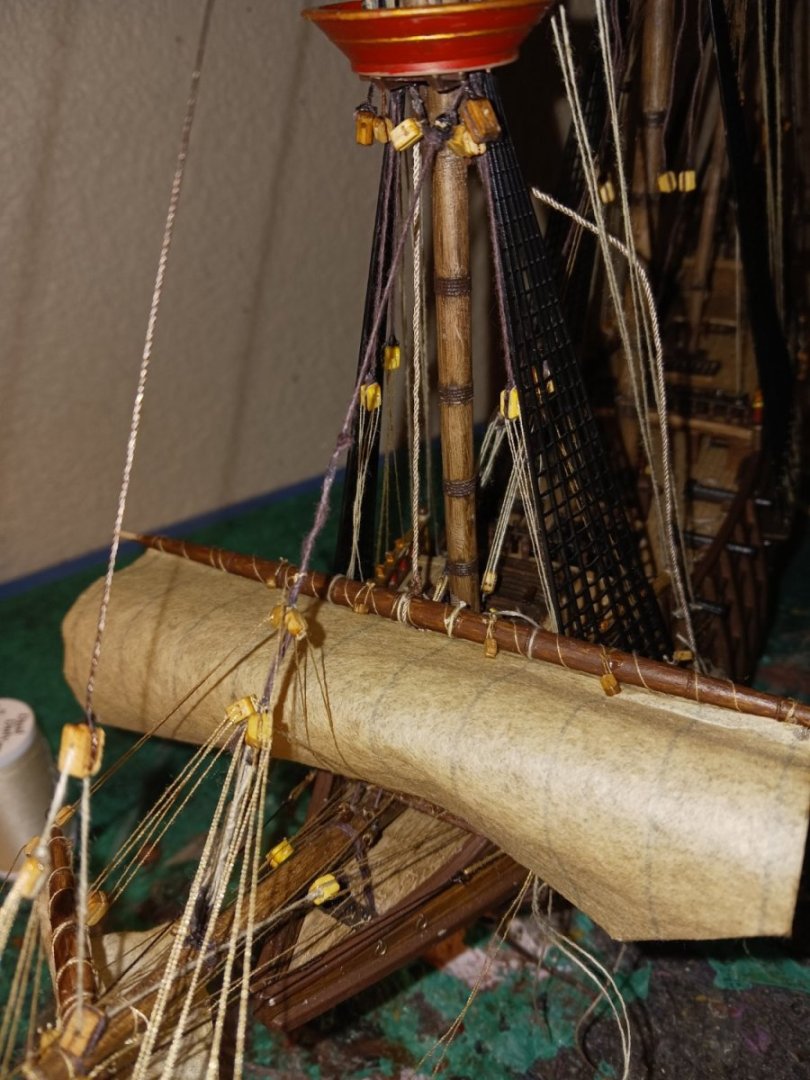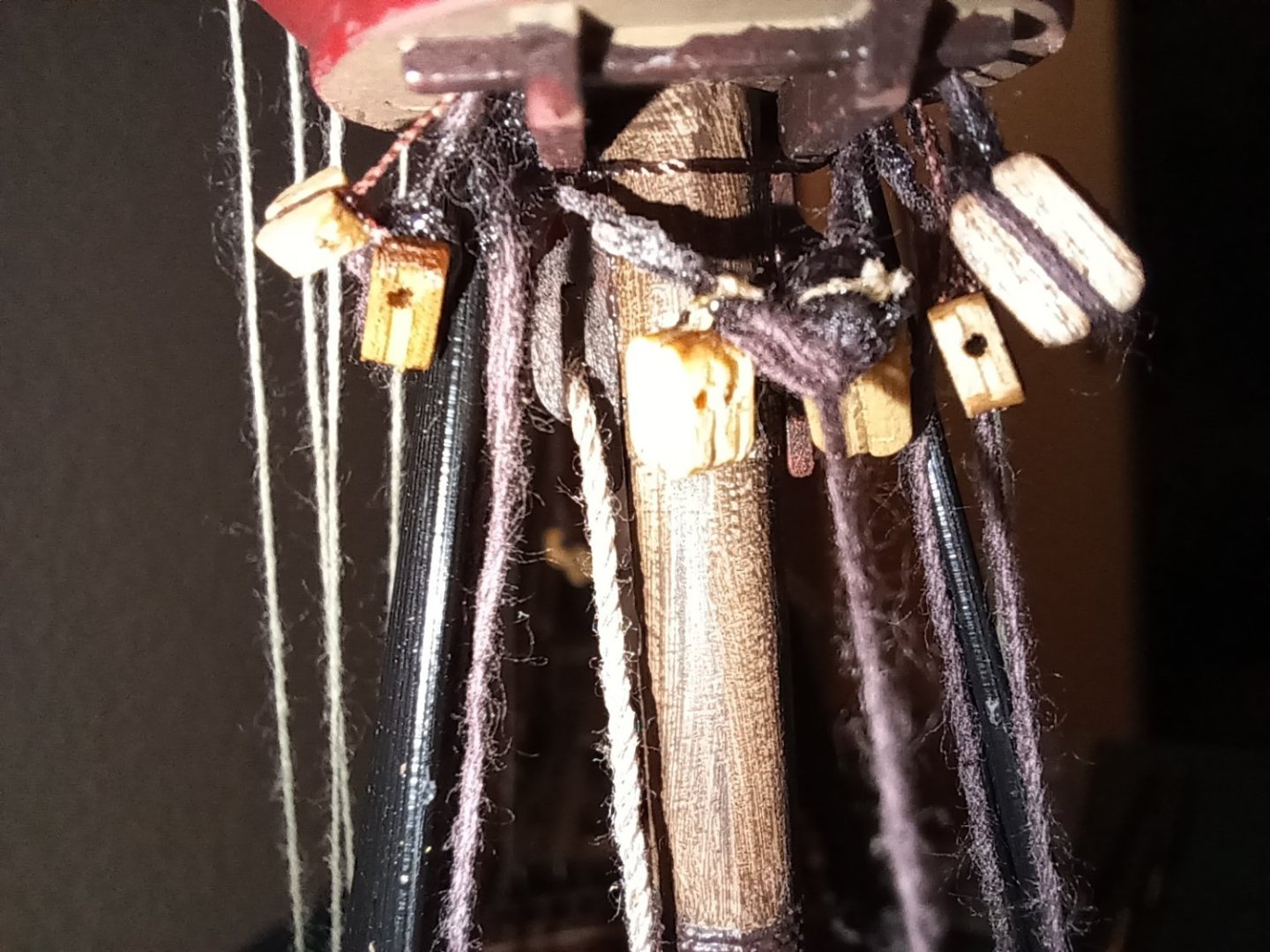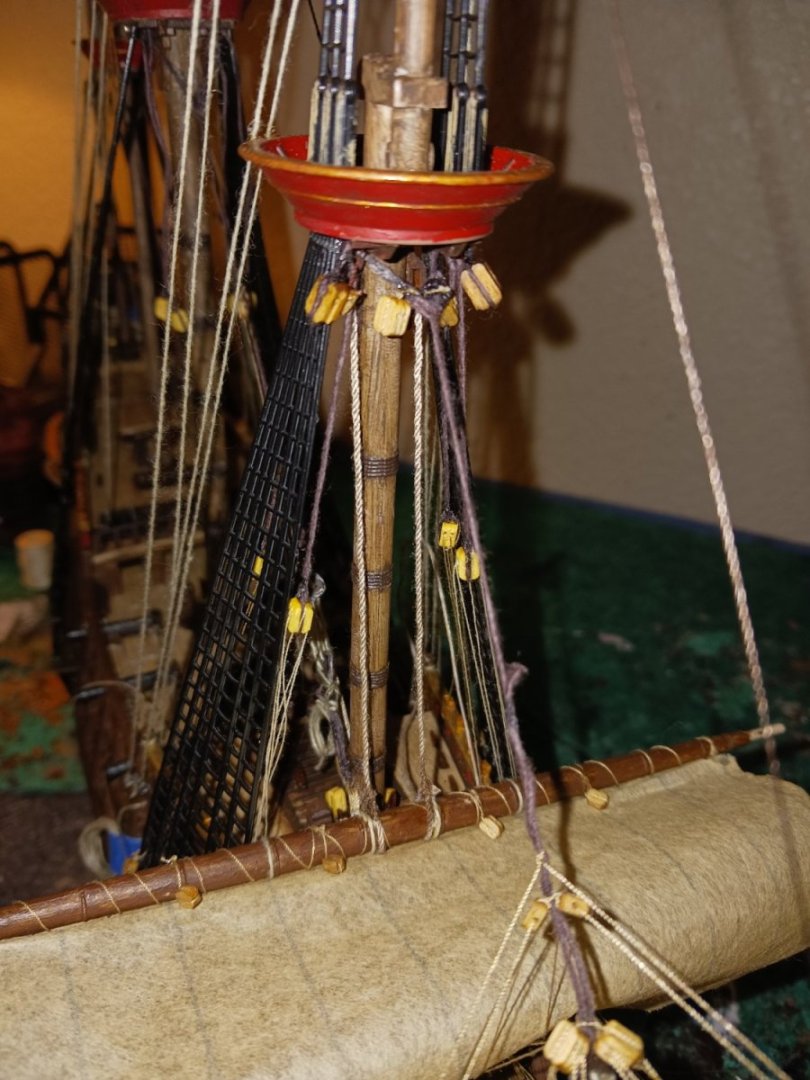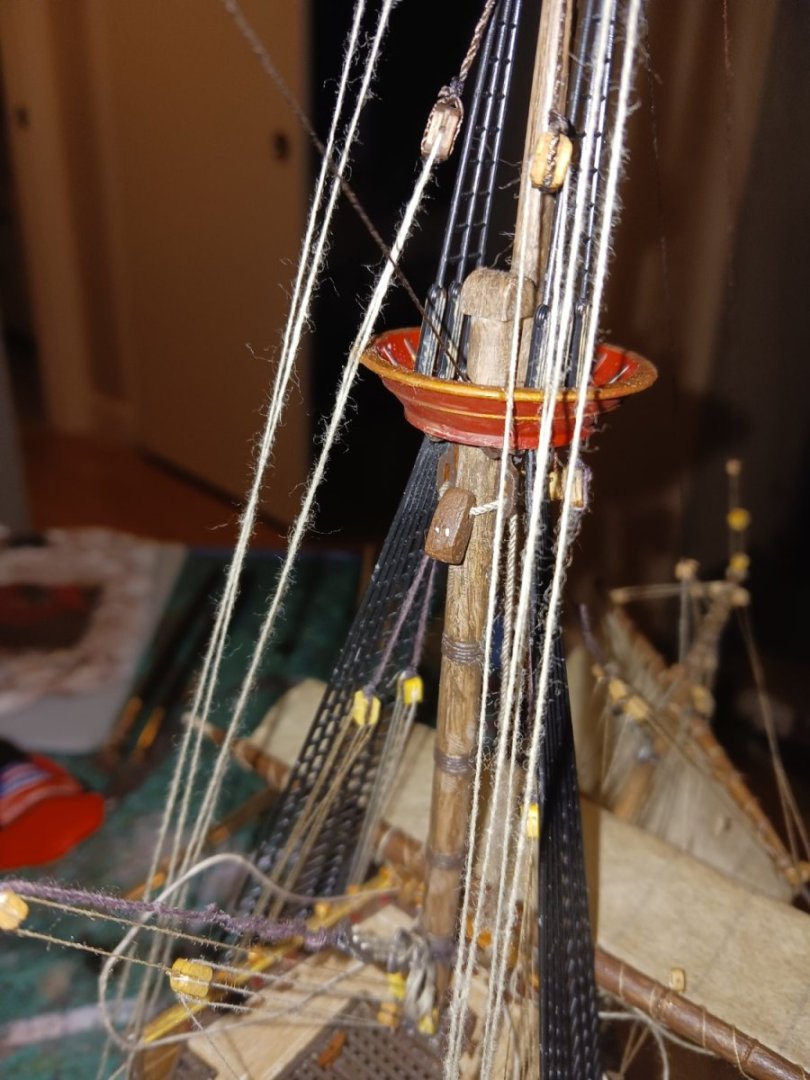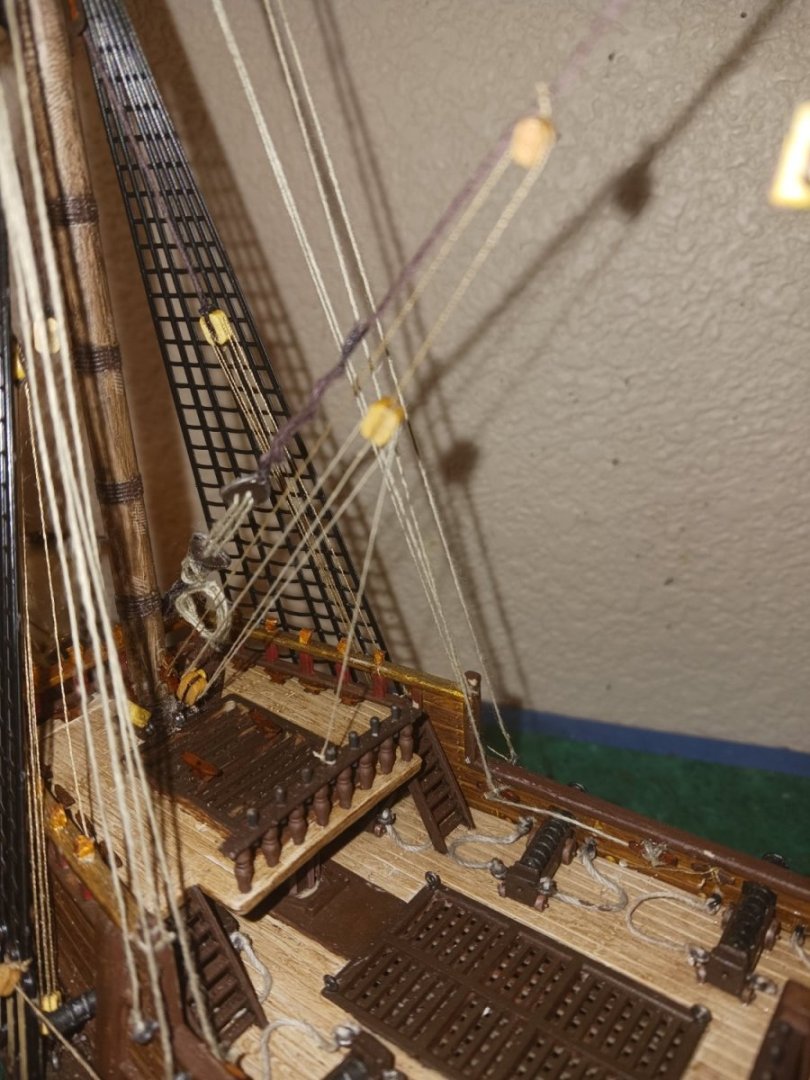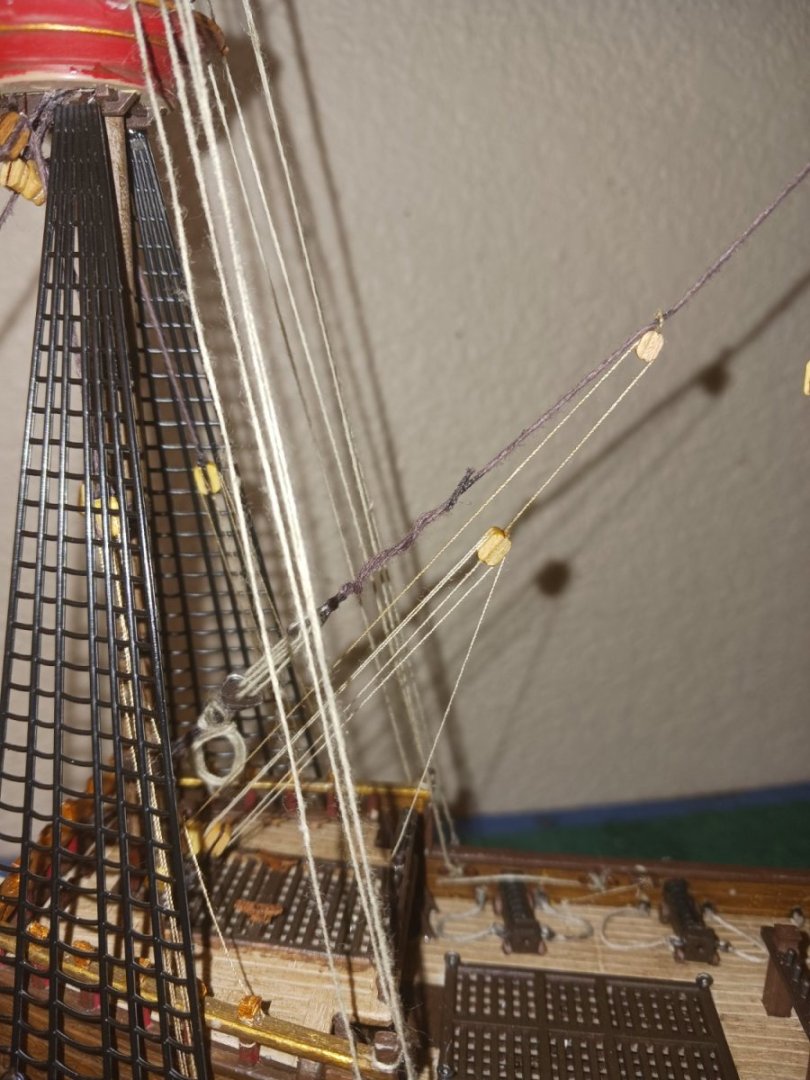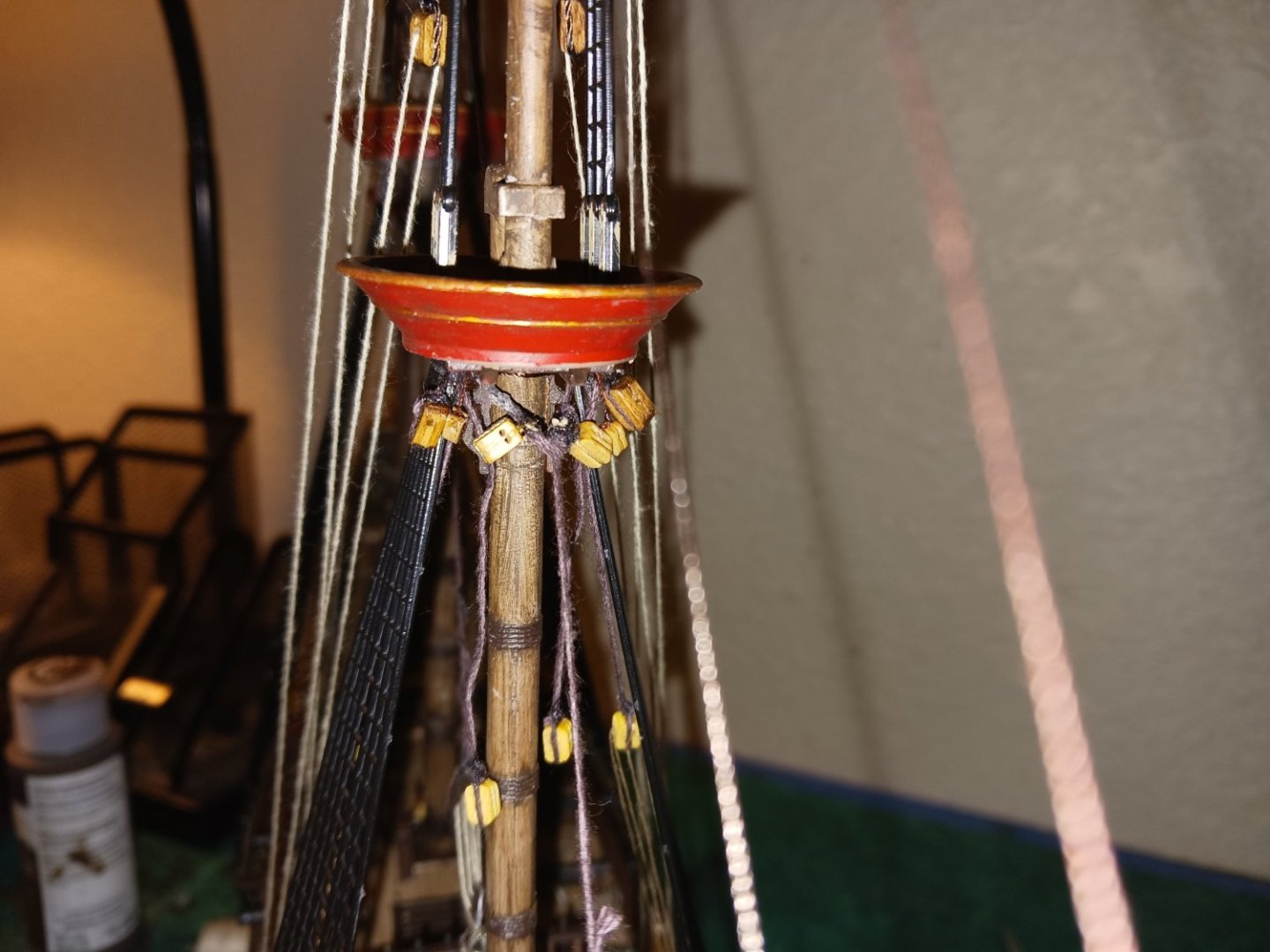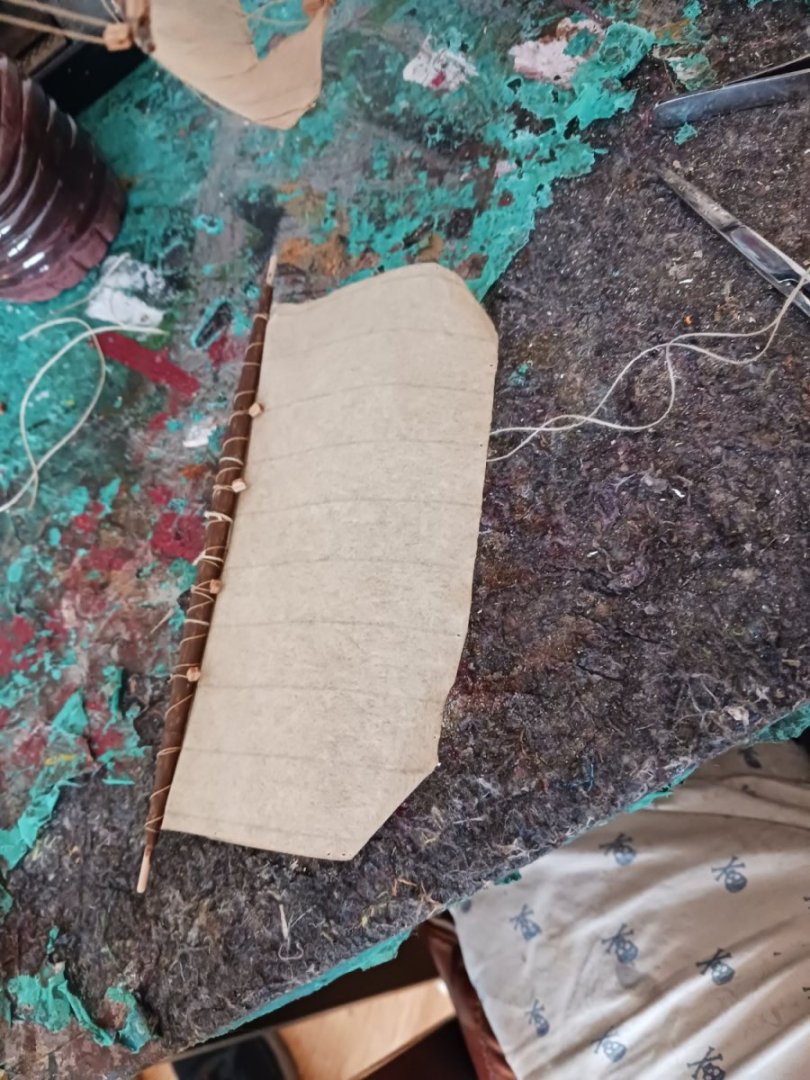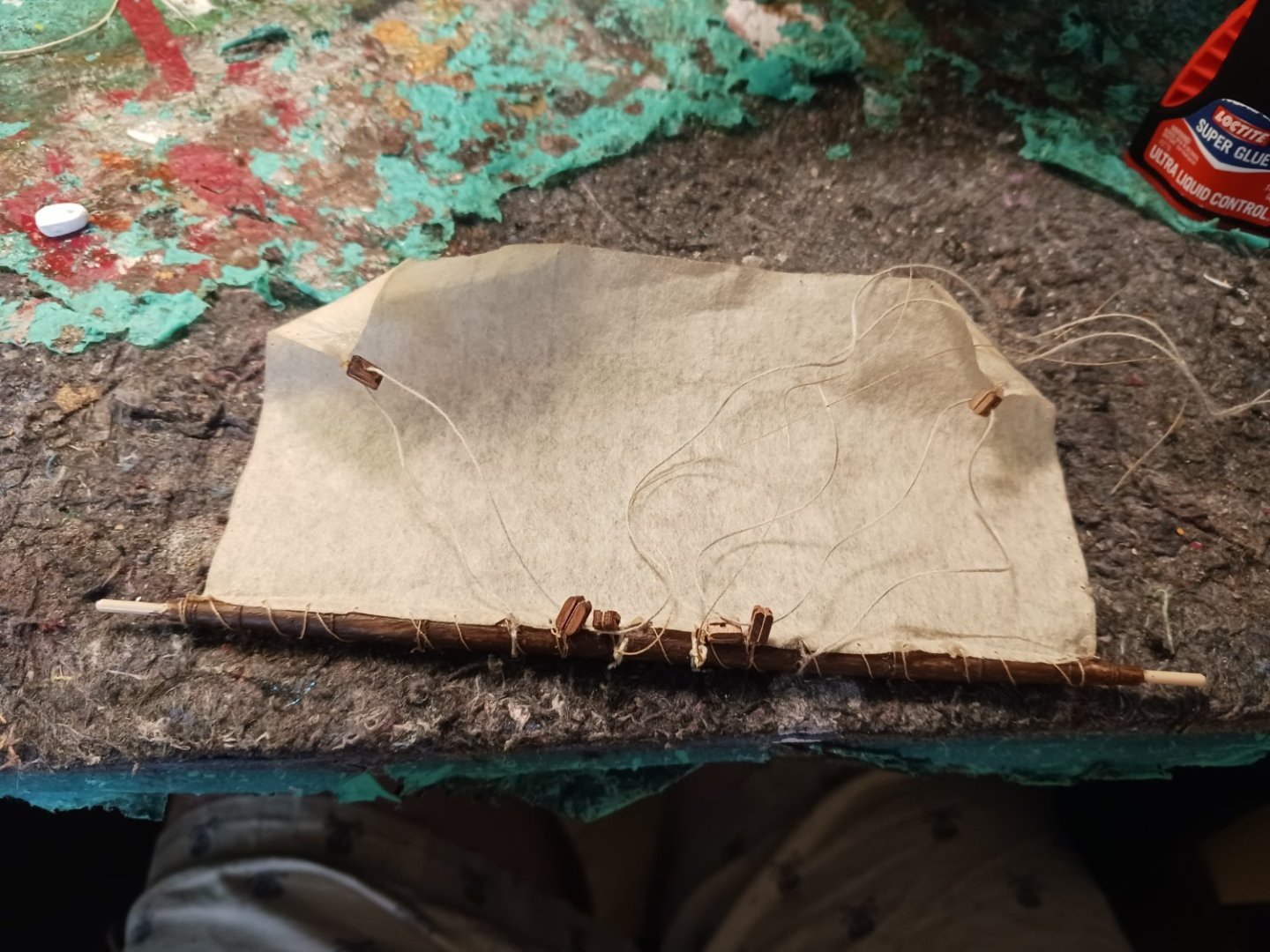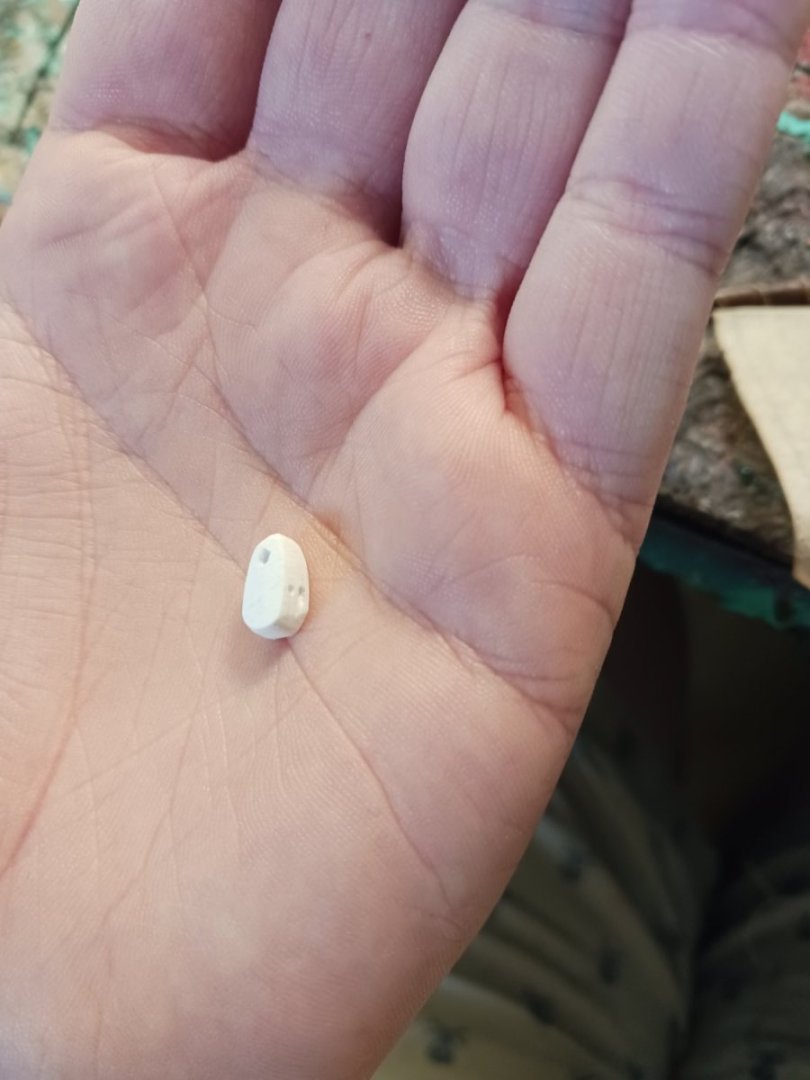-
Posts
1,389 -
Joined
-
Last visited
Content Type
Profiles
Forums
Gallery
Events
Everything posted by Ferrus Manus
-
Bedankt, Baker. Now, i legitimately believe this vessel will be much more complex and insane than your Pelican, only because it is a much larger and more heavily rigged vessel. Also, i figured out how to run the bowlines up to the fighting tops without them fouling on their respective sails, which was your issue on the Pelican. You simply need to run them through the lubbers' holes instead of running them over the tops of the structures themselves. Also, the main course will be slightly easier to rig than the fore, owing to its increased size as well as the fact that the belaying area is larger than the relatively small forecastle.
- 279 replies
-
- Spanish Galleon
- Imai
-
(and 1 more)
Tagged with:
-
The one frustrating thing is that most artists, even Vroom, omitted many small/light lines in the interest of simplicity.
- 279 replies
-
- Spanish Galleon
- Imai
-
(and 1 more)
Tagged with:
-
I got the fore course done today. Surprisingly, there wasn't much more to it than the courses on the Golden Hinde. All that was left to do was the buntlines, topping lifts, martnets, and bowlines.
- 279 replies
-
- Spanish Galleon
- Imai
-
(and 1 more)
Tagged with:
-
@Isaiah I suggest reading this build log as well for help on rigging techniques.
- 589 replies
-
- le gros ventre
- cargo
-
(and 1 more)
Tagged with:
-
Yeah, we go through an apocalypse every year. If we just went back to traditional methods of eating and living, we wouldn't have this problem.
- 2,696 replies
-
- heller
- soleil royal
-
(and 9 more)
Tagged with:
-
@Louie da flyI've read both Chaucer and Beowulf.
- 177 replies
-
- Perseverance
- Modellers Shipyard
-
(and 1 more)
Tagged with:
-
Or maybe, the extant shipwrecks simply show the keel having bent under the stress of almost a thousand years of existence. It could be a common deformation of the wood as it gets eroded away and buried in silt and dirt.
- 508 replies
-
Stay here for a bit, Steven. The main course's heavy lines are rigged. The lighter lines (buntlines, martnets, bowlines) come next.
- 279 replies
-
- Spanish Galleon
- Imai
-
(and 1 more)
Tagged with:
-
The next task is to rig the sheets and tacks, before belaying the clews and finally, the buntlines, martnets, and bowlines.
- 279 replies
-
- Spanish Galleon
- Imai
-
(and 1 more)
Tagged with:
-
Then, after that, i rigged the lanyard to the knighthead, and made up the block and tackle, raising the yard into its position. I also i did the braces for the yard. I also did the tackles for the parrel, which are the two sets of double blocks on the deck. They fall to a pair of cleats on the mast.
- 279 replies
-
- Spanish Galleon
- Imai
-
(and 1 more)
Tagged with:
-
So, today i got the fore course mounted to the mast. First, i tied the halyard at one point to the yard. Then, i threaded the halyard through one of the sheaves in the side of the mast, and held it in place. It was at this point that i began prep for the parrel. I threaded the halyard through the violin block and back through the second sheave in the mast, before tying it back to the yard. More in the next few minutes.
- 279 replies
-
- Spanish Galleon
- Imai
-
(and 1 more)
Tagged with:
-
Goes to show how ahead of the game you were in the world of ship modelling at my age. Thanks!!
- 279 replies
-
- Spanish Galleon
- Imai
-
(and 1 more)
Tagged with:
-
Yes, the rigging plan is accurate. And yes, the sails should be rigged before being hoisted.
- 59 replies
-
- Santa Maria
- Artesania Latina
-
(and 1 more)
Tagged with:
-
Don't make me break up a brawl between you and Woodrat. Yes, i know i'm late to make this comment.
- 740 replies
-
- Tudor
- restoration
-
(and 4 more)
Tagged with:
-
I did more prep for the fore course. The mainstay tackle is complete, in its stored position at the base of the foremast.
- 279 replies
-
- Spanish Galleon
- Imai
-
(and 1 more)
Tagged with:
-
@woodrat @Louie da fly Let's settle this argument once and for all. Yes, you already know what i'm talking about. For those unaware, there is a debate between Dick and Steven concerning the bowsprit grapnels common on carracks of around this time. Steven believes they only existed on warships, to serve the purpose of dropping on top of another ship to hold her in place for boarding, while Dick believes they existed as sort of an auxiliary anchor. Now, gather round and listen to my ramblings... These two naves are clearly warships, as they possess both anti-boarding nets and gads on the fighting tops (gads are large javelins meant to be thrown onto enemy sailors). They also both have the characteristic grapnel hanging from the bowsprit. Now, i tend to fall on the side of Steven in this debate. However, the true answer is likely more nuanced than that. In the medieval period, all the way up until the Renaissance, most if not all painters of nautical scenes did not care much about perfect realism in their artworks. Instead, they wanted to portray the idea of "ship", and they certainly did not imagine that almost six hundred years later, historians would use their artworks to piece together the functional details of an entire type of vessel that no longer exists. That being said, when a young artist in the medieval period first saw a carrack, the awe-inspiring image would certainly be burned into his memory. Were that a military vessel, it would have had a grapnel. This, to the young artist, would have been one of the most striking features of such a vessel, and, not being a sailor himself, would not have known the difference. Then, throughout his career, when asked to paint a carrack, he would likely call upon this memory like it was yesterday, and he certainly would not forget the spiky metal bit hanging off the bowsprit.
- 72 replies
-
I love how this one little ship facilitated the most underrated, history-altering heist in world history.
- 508 replies
-
I attached the blocks to and around the forestay collar. The larger single blocks will be for the course topping lifts, the smaller ones for the martnets, and the double blocks will accept the buntlines. This same system of blocks will also be added on the main.
- 279 replies
-
- Spanish Galleon
- Imai
-
(and 1 more)
Tagged with:
-
Thanks, all! I plan to become a historian, working as an archaeologist or in a museum, using my knowledge of history and ships to great length The history of the world is a history of ships, shipbuilding, and sailing, and it deserves to be learned about. Also, i went and got thin diameter thread today, so the build can progress.
- 279 replies
-
- Spanish Galleon
- Imai
-
(and 1 more)
Tagged with:
-
I entirely plan to be the exception to the rule.
- 2,696 replies
-
- heller
- soleil royal
-
(and 9 more)
Tagged with:
-
I actually graduated high school today!! So glad i made it. On to a degree in nautical history!!
- 279 replies
-
- Spanish Galleon
- Imai
-
(and 1 more)
Tagged with:
-
I am getting the fore course yard ready to be hoisted up on the foremast. I installed the clewlines, and i decided against using real parrels. I made this executive decision because a true parrel would not fit in the space provided, look out of scale, and clutter things up at the top of the mast. So, i settled for a reasonable alternative, which was the system used for the spritsail yard. Now, before i hoist the yard, i first need to get some things done to facilitate that. I need to install the mainstay tackle, as well as the forward foremast tackles inside the shrouds. Anyway, i made a custom violin block out of card, for the halyard on the fore course. I have yet to paint it. I will make another one, slightly larger, for the main course. For the mizzen and bonaventure lateens, i will simply use a double block.
- 279 replies
-
- Spanish Galleon
- Imai
-
(and 1 more)
Tagged with:
-
Do you, by any chance, own a wood-turning lathe? If not, you need one.
- 177 replies
-
- Perseverance
- Modellers Shipyard
-
(and 1 more)
Tagged with:
About us
Modelshipworld - Advancing Ship Modeling through Research
SSL Secured
Your security is important for us so this Website is SSL-Secured
NRG Mailing Address
Nautical Research Guild
237 South Lincoln Street
Westmont IL, 60559-1917
Model Ship World ® and the MSW logo are Registered Trademarks, and belong to the Nautical Research Guild (United States Patent and Trademark Office: No. 6,929,264 & No. 6,929,274, registered Dec. 20, 2022)
Helpful Links
About the NRG
If you enjoy building ship models that are historically accurate as well as beautiful, then The Nautical Research Guild (NRG) is just right for you.
The Guild is a non-profit educational organization whose mission is to “Advance Ship Modeling Through Research”. We provide support to our members in their efforts to raise the quality of their model ships.
The Nautical Research Guild has published our world-renowned quarterly magazine, The Nautical Research Journal, since 1955. The pages of the Journal are full of articles by accomplished ship modelers who show you how they create those exquisite details on their models, and by maritime historians who show you the correct details to build. The Journal is available in both print and digital editions. Go to the NRG web site (www.thenrg.org) to download a complimentary digital copy of the Journal. The NRG also publishes plan sets, books and compilations of back issues of the Journal and the former Ships in Scale and Model Ship Builder magazines.


